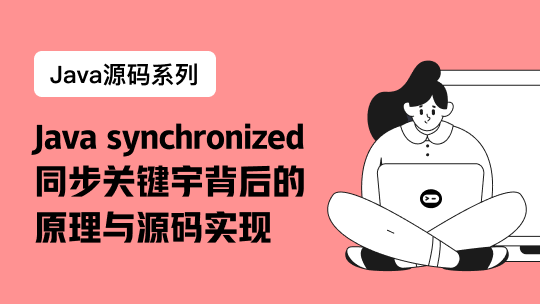HashMap
可被序列化,线程不安全,允许null值和null键,
安全的Map
Collections.synchronizedMap():
/**
* Returns a synchronized (thread-safe) map backed by the specified map. In order to guarantee
* serial access, it is critical that all access to the backing map is accomplished through the
* returned map.
* It is imperative that the user manually synchronize on the returned map when traversing any of
* its collection views via Iterator, Spliterator or Stream:
* Map m = Collections.synchronizedMap(new HashMap());
* ...
* Set s = m.keySet(); // Needn't be in synchronized block
* ...
* synchronized (m) { // Synchronizing on m, not s!
* Iterator i = s.iterator(); // Must be in synchronized block
* while (i.hasNext())
* foo(i.next());
* }
*/
public static <K,V> Map<K,V> synchronizedMap(Map<K,V> m) {
return new SynchronizedMap<>(m);
}ConcurrentHashMap:
默认负载因子为0.75,
static final float DEFAULT_LOAD_FACTOR = 0.75f;默认初始大小为16,
static final int DEFAULT_INITIAL_CAPACITY = 1 << 4; // aka 16当阈值超过16*0.75=12时,会进行扩增操作,每次扩展会进行2的幂扩展,如果当前容量超过了默认容量大小时,最大容量会变成Integer的最大值
最大容量
static final int MAXIMUM_CAPACITY = 1 << 30;当容量大于等于64时,HashMap会将列表转化为树(bin的值必须大于2且至少为8)
/**
* The smallest table capacity for which bins may be treeified.
* (Otherwise the table is resized if too many nodes in a bin.)
* Should be at least 4 * TREEIFY_THRESHOLD to avoid conflicts
* between resizing and treeification thresholds.
*/
static final int MIN_TREEIFY_CAPACITY = 64;
/**
* Replaces all linked nodes in bin at index for given hash unless
* table is too small, in which case resizes instead.
*/
final void treeifyBin(Node<K,V>[] tab, int hash) {
int n, index; Node<K,V> e;
if (tab == null || (n = tab.length) < MIN_TREEIFY_CAPACITY)
resize();
else if ((e = tab[index = (n - 1) & hash]) != null) {
TreeNode<K,V> hd = null, tl = null;
do {
TreeNode<K,V> p = replacementTreeNode(e, null);
if (tl == null)
hd = p;
else {
p.prev = tl;
tl.next = p;
}
tl = p;
} while ((e = e.next) != null);
if ((tab[index] = hd) != null)
hd.treeify(tab);
}
}在进行put操作时,如果已经有相同的key,则会将其值进行替换。如果hash值相同会进行内存地址比较,如果地址不相同,则会继续进行非空和equals值比较
/**
* Associates the specified value with the specified key in this map.
* If the map previously contained a mapping for the key, the old
* value is replaced.
*
* @param key key with which the specified value is to be associated
* @param value value to be associated with the specified key
* @return the previous value associated with {@code key}, or
* {@code null} if there was no mapping for {@code key}.
* (A {@code null} return can also indicate that the map
* previously associated {@code null} with {@code key}.)
*/
public V put(K key, V value) {
return putVal(hash(key), key, value, false, true);
}
/**
* Implements Map.put and related methods.
*
* @param hash hash for key
* @param key the key
* @param value the value to put
* @param onlyIfAbsent if true, don't change existing value
* @param evict if false, the table is in creation mode.
* @return previous value, or null if none
*/
final V putVal(int hash, K key, V value, boolean onlyIfAbsent,
boolean evict) {
Node<K,V>[] tab;
Node<K,V> p;
int n, i;
if ((tab = table) == null || (n = tab.length) == 0)
n = (tab = resize()).length;
if ((p = tab[i = (n - 1) & hash]) == null)
tab[i] = newNode(hash, key, value, null);
else {
Node<K,V> e; K k;
if (p.hash == hash &&
((k = p.key) == key || (key != null && key.equals(k))))
e = p;
else if (p instanceof TreeNode)
e = ((TreeNode<K,V>)p).putTreeVal(this, tab, hash, key, value);
else {
for (int binCount = 0; ; ++binCount) {
if ((e = p.next) == null) {
p.next = newNode(hash, key, value, null);
if (binCount >= TREEIFY_THRESHOLD - 1) // -1 for 1st
treeifyBin(tab, hash);
break;
}
if (e.hash == hash &&
((k = e.key) == key || (key != null && key.equals(k))))
break;
p = e;
}
}
if (e != null) { // existing mapping for key
V oldValue = e.value;
if (!onlyIfAbsent || oldValue == null)
e.value = value;
afterNodeAccess(e);
return oldValue;
}
}
++modCount;
if (++size > threshold)
resize();
afterNodeInsertion(evict);
return null;
}











